 I think that as a competitive shooter, one of the best things I do to improve are these articles which examine and analyze my performance. I started doing them back in 2017. I followed that up another one in 2018. For 2019, I documented my preseason preparation and did a midpoint assessment on the goals I set. The objective here is simple: Set goals, create a plan to achieve those goals, execute the plan, then assess the effectiveness of the plan – tweak the plan as necessary. If you’re not doing something similar in your own training, I’d recommend starting.
I think that as a competitive shooter, one of the best things I do to improve are these articles which examine and analyze my performance. I started doing them back in 2017. I followed that up another one in 2018. For 2019, I documented my preseason preparation and did a midpoint assessment on the goals I set. The objective here is simple: Set goals, create a plan to achieve those goals, execute the plan, then assess the effectiveness of the plan – tweak the plan as necessary. If you’re not doing something similar in your own training, I’d recommend starting.
WHAT DIDN’T GO WELL FOR ME IN 2019
Not much really – in stark contrast to my 2018 shooting season. Problems usually come in two different forms – health problems and gun problems. I did have a health problem this year, though thankfully not as bad as last year. Shortly before the 2019 Area 5 Steel Challenge Championship, I developed a moderate case of tendonitis in my right arm – commonly called “tennis elbow.” It was relatively painful, though manageable. The biggest problem was the significant reduction in my grip strength in my right hand – I’m guessing between 30% to 50% depending on the day. Immediately after Area 5 I took a couple of weeks off of dry and live fire, which helped. I consulted with some friends who have experience with dealing with Tennis Elbow and watched some YouTube videos on exercises and such. I also took some prescription strenth Ibuprofen to help with inflammation and pain. That got me through the last couple of moths of matches, though I wasn’t at 100%. Now that I’m finished with the season, I’ll seek treatment and (I’m guessing) be prescribed rehab. If I’m lucky, maybe a steroid shot and some time off will do the trick. In terms of my guns, I had some relatively minor issues creep up. I’m very regimented about cleaning both my Gen 2 MPX Carbine and my MPX PCC every thousand rounds (usually less) which is crucial to keeping the MPX platform running failure-free. I generally shot the carbine in USPSA and the PCC in Steel Challenge and both ran exceptionally well for most of the season. Then, within about a week, both rifles experienced extractor issues. With the Carbine, it was sudden – the extractor actually snapped in half. The PCC was more gradual. I first noticed toward the end of a couple of local matches that I’d get one or two failures to eject. Then, in the middle of the Indiana State Steel Challenge Championship, it went single shot – I had to “DNF” for PCCO in that match. In both cases, replacing the extractor with In Lead We Trust extractors fixed the problem. So going forward, I will keep spare MPX extractors on hand. The only other issue I had was with my M&P 15-22 that I picked up earlier this year. It is well modified and has a Volquartzen carbon fiber barrel that many indicate is a bit too tight in diameter. It ran well for me at the World Speed Shooting Championship, and very well for me at the Indiana State Championship where I easily won RFRO B class and made it into A class (my second time shooting the rifle in competition). The following weekend at the Dan Ireland Memorial it was erratic, as was the case at the Kentucky State Steel Challenge Championship the following weekend. During the off-season, I plan to play with some different varieties of .22LR to find something the gun likes. If that fails, a trip to see Uncle Billy Stripplin to ream out the barrel and perform a tuning should alleviate the problem.
The only other thing that didn’t go according to plan was that I had hoped to lose another 10-12 lbs. before the end of the season, but I basically maintained from July 4th to present. Because…Summer ice cream… But now that the season has ended, I’m going to give myself a week of rest, then I’ll start hitting the treadmill and tightening up the diet again. Once I know what my restrictions will be with my tendonitis, I’ll want to try and use free weights again to see what my body can handle. All in all, I consider these pretty minor issues as they did not impede me from achieving the goals I had set a year ago.
I had hoped to shoot more 3-Gun than I did in 2018 – which technically I did. The 1 match I shot in February beat my 2018 match total by 100%. But conflicts came up with other local matches, and I do better when I can focus. That, and I just can’t get excited for 3-Gun like I used to. I think the demise of 3-Gun Nation (OK, technically it’s not dead…but nothing like it used to be) is part of it.
WHAT WENT WELL IN 2019?
Darn near everything really. I ended up shooting a total of 7 major matches in 2019 – three USPSA majors and four Steel Challenge. If you count the Dan Ireland Memorial match (which WILL be a Level II in 2020) that brings the total to 8 – that’s a lot of matches. I was actually signed up for 8 matches, but opted to not shoot the Indiana Sectional (it would have been my 4th major match in as many weeks). Overall, I shot 34 practical shooting events from January until the middle of October – that’s up from 20 the previous year.
In terms of my goals, I nailed nearly every one. Early in the year, I made B Class in USPSA Carry Optics. That makes me an Average Joe USPSA shooter, and I’m fine with that. Perhaps one day I’ll get motivated enough in USPSA to want to make A Class in CO. I thought I’d have more of an opportunity to make A Class in USPSA PCC, but not enough local classifier matches were available. It’s possible one might come around before January 1st, so I’m not entirely giving up on the goal. But by the same token, neither is it particularly important to me, and my focus now through the end of the year will be getting my right arm/hand back to 100%, and weight loss. My “class up” goals in Steel Challenge were far more important to me in 2019, and I nailed ’em. Make Master in PCCO? Check. Make A Class in Carry Optics Pistol? Checkaroo. Along the way to accomplishing these goals I made the Steel Challenge Top 20 in the USA in both A Class PCCO (#2) then Carry Optics in B Class (#7) respectively:
These were hard-fought accomplishments for me. And they represent a tremendous leap forward in shooting ability year over year – this is important to understand. I never wanted to be the sort of Steel Challenge shooter that every match or so got lucky on a stage, and eventually classed up – but never truly shoots at the level of their classifications. To illustrate, in 2018, if you look at my scores on the 8 stage matches I shot in Carry Optics, I generally always shot between 140 seconds and 145 seconds, until my best performance of 2018 coming at the 2018 Tennesee State Steel Challenge Championship where I shot a 135.35 – my first time shooting below 140 seconds. Fast forward to the 2019 World Speed Shooting Championship. My big concern for that match was not being able to shoot at the talent “peak” that I reached at the end of 2018 so soon into 2019. I trained heavily for the World Speed Shoot, and managed a career-best 134.44, which put me in 3rd place in Carry Optics B Class. Placing in my class at the World Speed Shooting Championship was a highlight of my shooting career to date – it was such a blessing. The next major SCSA match I shot would be the Area 5 Championship – which was shortly after my tendonitis first manifested. As such, I shot a disappointing 141.94, but somehow came in 1st in B Class Carry Optics, and 5th in a division of 19 competitors. From about July 1st through Sept 27th, I made almost no progress on my goal to make A class CO – my grip strength would not allow me to perform to the level at which I knew I was capable. At the Indiana State Steel Challenge Championship, I started getting back on track and shot a 134.76 – only .3 seconds slower than my career-best at the World Speed Shoot. I also added a couple of personal best stages which moved me closer to making A Class. I finished 2nd in B Class Carry Optics, and 4th in the division. The next weekend I would shoot the Dan Ireland Memorial match, and shot a 134.18 – marginally beating my performance at the World Speed Shooting Championship, and adding more personal best scores which took me to number 7 in the Nation in B Class Carry Optics, and only needing about .5% to spill over into A Class. Historically, my final match of the year is my best match, and 2019 would continue that trend. At the 2019 Kentucky Steel Challenge State Championship, I shot another career-best time of 130.66, and added three more personal best scores. That performance resulted in a new overall percentage of 75.43, which put me into A Class. I finished 2nd in the Carry Optics Division at the Kentucky match:
In some ways, the tendonitis that hit me this season was a blessing. When it happened, it was clear to me that pistol shooting irritated the condition, but rifle shooting had very little detrimental impact. So my tendinitis gave me the opportunity to practice ?harder on rifle than I ever had in the past. At my last match of 2018 (Tennessee), I shot a 100.58 – the exact same score I shot at the Area 5 match early in the year. At the World Speed Shoot, I shot a 101.92 – worse than my 2018 scores (but not much) and frustrating that I could not get below 100 seconds in a match. With more bandwidth to focus on PCC thanks to my injury, I finally broke the 100 second barrier at the 2019 Area 5 Steel Challenge Championship with a score of 95.26 – good enough for 2nd Place in PCCO A Class:
After this match, the proverbial light bulb went on, and I figured out how to really go fast with my PCC. I won several local matches shooting PCCO – I was on fire. Along the way, I was adding one or two personal best stages with every local match, and quickly rocketing from the bottom of A Class to #2 in the Nation. I fully expected to win A Class PCCO at the Indiana State Steel Challenge Championship and bump up to Master Class. Alas, my extractor spring wore out at the match and I was unable to finish in that division. That next week, I replaced the extractor, and went to the Dan Ireland Memorial match, and shot my best PCCO match ever. I went from not being able to break 100 seconds earlier in the year to shooting an 89.58 at this match, not only winning A Class, but coming in 4th in the division to 3 GM PCCO shooters – I managed to beat all the other Master Class shooters. The following weekend at the Kentucky State Championship proved my performance wasn’t a fluke, as I shot a 90.17 (only about .5 seconds slower than the week before) and won 2nd Place in Master Class PCCO:
My fears of being a “paper M Class shooter” were clearly unfounded. I’m going to train hard over the off-season and try to make GM in 2020. I’m well on my way with a current 87.17% classification. Hopefully the January 1st 2020 peak time adjustment to PCCO doesn’t set me too far back.
I should also add that even though I only shot 3 matches with my M&P 15-22, in RFRO, I’m well on my way to making M Class in that division as well, with M Class scores on 3 different stages, and an overall percentage classification of 80.82% – only about 4% from making M. Once my function issues get resolved, I should be able to do it easily. I also started shooting RFPO which is really fun – I shot one 4 stage match and made B Class with ease. A Class should be no problem.
My USPSA year was far less successful at matches, but there were some bright spots. I shot 11 USPSA matches, including the majors I shot. I enjoyed very few of them – the Area 5 USPSA match shot over two days was the most enjoyable. The JP Enterprises PCC Championship being a low point. If I want to enjoy shooting USPSA, I’m going to have to focus on that. But I do love shooting steel. The one thing that might keep me shooting USPSA in 2020 is that I think I have a pretty decent shot at making it into the 2020 USPSA PCC Nationals which will be at Universal Shooting Academy in Frostproof FL on April 8-11th. I’ll probably need to make a decision sometime before January 1st if I want to shoot this match. I’ve never shot at Universal, and this will be the first stand-alone PCC National Championship. But it will also probably be a very difficult match. What to do?
WHAT DID I CHANGE?
Clearly I made an across the board quantum improvements this year in my shooting – particularly with my rifles. So how did I do it?
Probably the biggest differnce for me in 2019 was the volume of shooting that I did?. I don’t keep an exact round count, but looking back at my ammo orders, I shot not less than 20,000 rounds of 9mm alone – and I think it might be closer to 25,000 rounds. That’s probably double what I shot in 2018.
I also increased the frequency of my live fire practice. Historically I didn’t really practice live fire during the week, except to shoot an indoor match on Tuesday nights that was only about 50-60 rounds of shooting. As I got closer to Area 5, I stopped shooting that Tuesday night match and instead went to the range on Tuesday night and shot 250 to 300 rounds. Usually most of that was pistol, with only 50 to 100 rounds of PCC practice. Normally that would consist of:
- 7 runs on Bill Drill to warm up (10 yards). The goal is a sub 1 second draw, and a sub 2 second completion time with acceptable hits on a USPSA sized target.
- 5-6 runs on my 8 shot reload drill from 10 yards (draw, 2 on left, 2 on right, reload and repeat).
- 7 runs on a standard plate rack
- 7 runs doing transitions on a plate rack (working from the outside plates in).
- For PCC I normally just did the plate rack work, unless I was practicing for USPSA in which case I would do some of my 8 round reload drills.
I would change this up a bit depending on what type of a match I was preparing to shoot (USPSA vs. SCSA). I also did the same plate rack drills for my rimfire firearms.
On a non-major match week, I would easily be shooting 500 rounds per week. On the week of a major where I was going to the range on Tuesday and Friday, I would burn another 250-300 rounds of 9mm. Not to mention .22LR.
I also started dropping my par times in dry fire. My fear was that forcing myself to shoot faster in dry fire would lead to bad habits developing in my attempts to “beat the buzzer.” That’s a real threat, but you HAVE to force yourself to process information faster. Once you make it to B Class, you have reasonably solid shooting fundamentals – grip sight alignment, and trigger control. The key then to going faster is…going faster. You have to start going outside your comfort zone – in small, “baby steps.” Once I started doing that in both live and dry fire, I found myself performing at a substantially higher level. Visual speed was the key.
GIVING THANKS
I could not have achieved the level of success that I reached during 2019 without the help of my sponsors? – words cannot fully express my appreciation.

So there you have it – my look back on my 2019 year in competitive shooting. In a few weeks I’ll follow this up with a post about my 2020 goals.


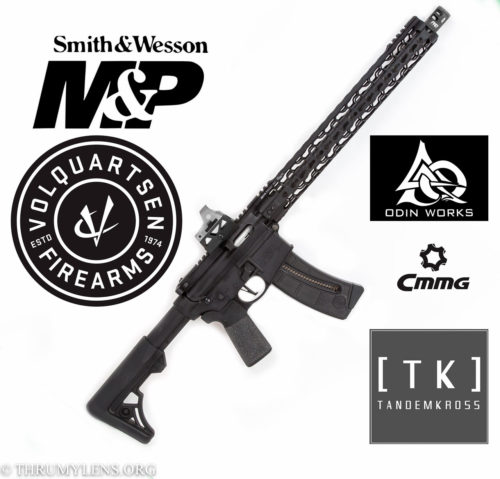
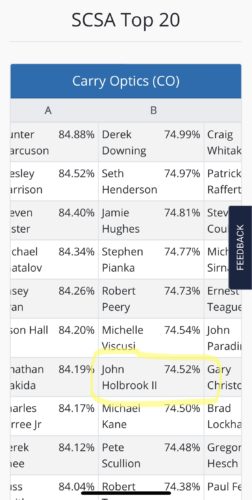
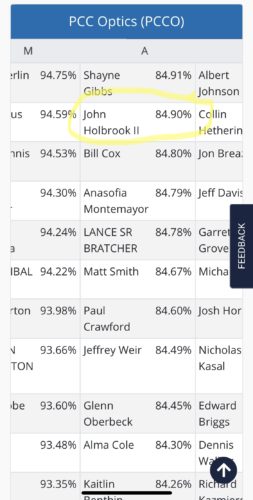
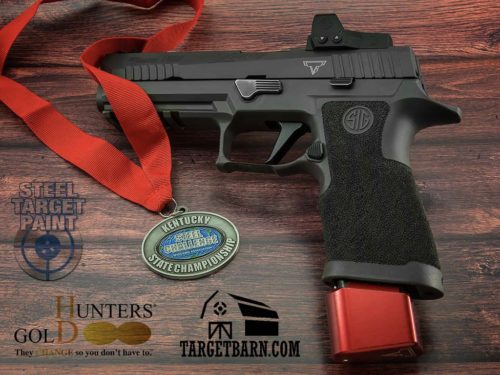
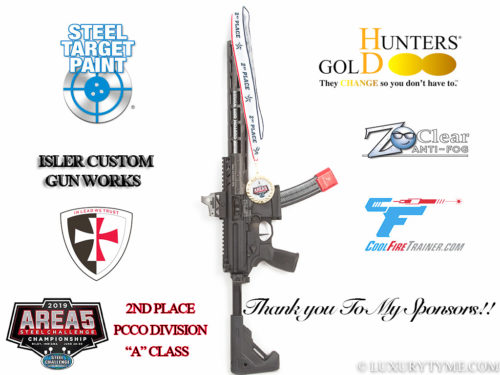
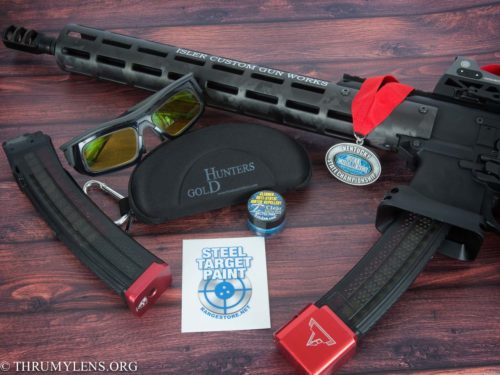
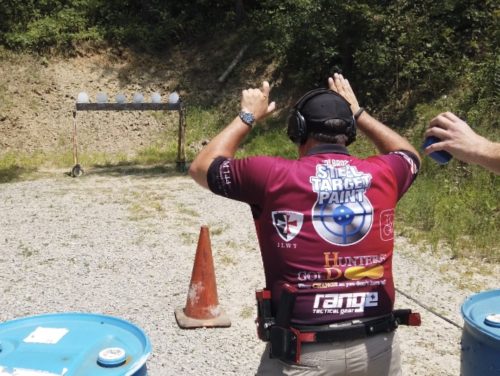
0 Comments